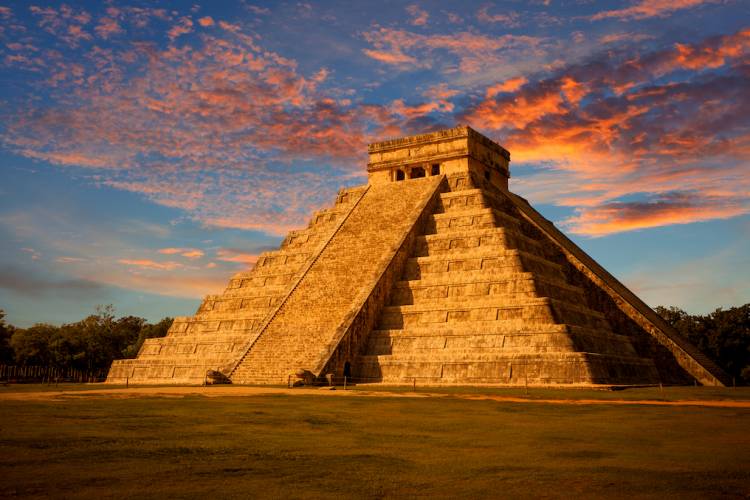Temple of Kukulcan Signals Summer Solstice

The ruins of Chichen Itza are a large pre-Columbian archaeological site built by the Maya civilization located in the north of the Yucatán Peninsula. Chichen Itza means “At the mouth of the well of the Itza” in Maya, which was probably a reference to the three cenotes which provided plentiful water for the settlement. The most popular cenote with visitors is the “Cenote of Sacrifice” which would draw worshipers of the Maya rain deity, Chaac.
Chichen Itza contains many buildings in various states of preservation; including temples, palaces, stages, markets, baths and ball courts. Dominating the center of Chichen is the Temple of Kukulcan (the plumed serpent god), often referred to as “El Castillo” (the castle). On the spring and fall equinox, at the rising and setting of the sun, the corner of the structure casts a shadow in the shape of a plumed serpent along the side of the North staircase.
The Temple of Kukulcan also signals the precise moment of the summer solstice, when the sun shines on the north and east sides of the building, it casts a shadow over the south and west sides. From the sky, it would look as if the pyramid were diagonally split into two parts.
Chichen Itza is about a 3 hour drive from Akumal. It’s easy to get there by bus or with your rental car, or you can book a guided tour from Akumal. Wear comfortable shoes, hat, sun block and bring a water bottle. Try to visit in the morning or late in the afternoon to avoid the hot sun at midday. The site is open every day from 9am-5pm. Light and sound show begins every night at 7pm (winter) and 8pm (summer).
